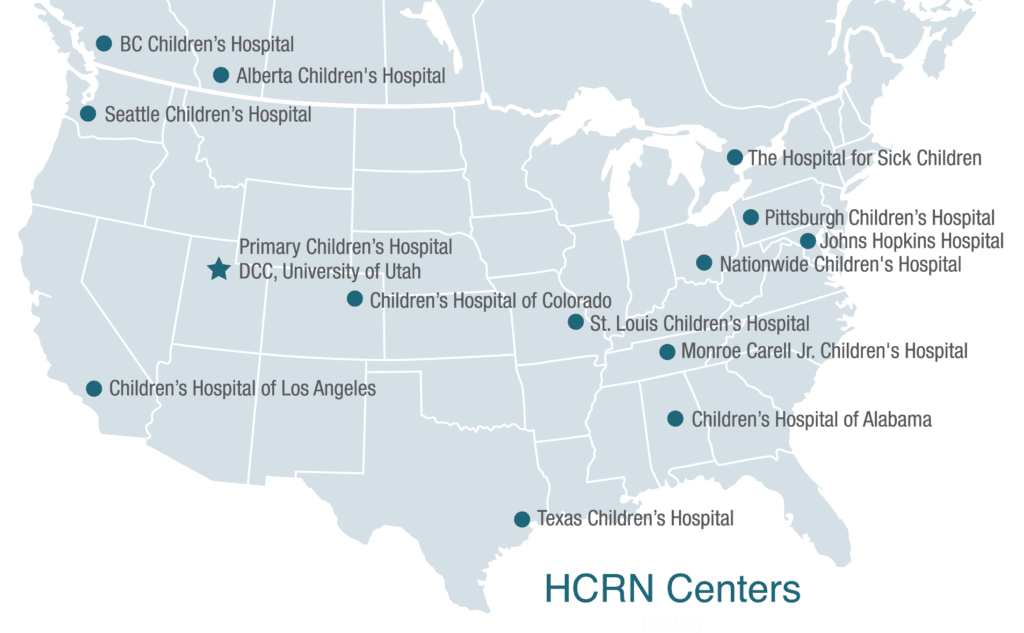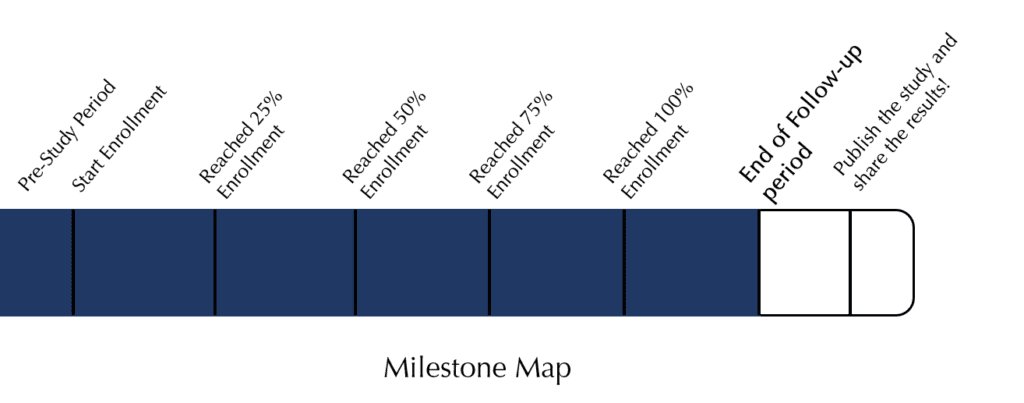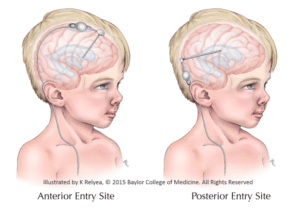The CSF Shunt Entry Site Study
A Randomized Controlled Trial of Anterior versus Posterior Entry Site for CSF Shunt Insertion
Participating HCRN Centers
 On September 30th 2014, the last day of Hydrocephalus Awareness Month, the Patient-Centered Outcomes Research Institute (PCORI) announced it is awarding a $1.8 million contract in support of a Hydrocephalus Clinical Research Network (HCRN) randomized control trial to determine the most effective entry site for placing a shunt. The Hydrocephalus Association (HA) partnered with HCRN to involve patients and caregivers in the initial study selection and development. HA will continue to play a leading role in the conduct of the study and dissemination of study results. For those of you that responded to our research survey in late April of 2014, thank you. You helped identify the priorities for research funding for our community.
On September 30th 2014, the last day of Hydrocephalus Awareness Month, the Patient-Centered Outcomes Research Institute (PCORI) announced it is awarding a $1.8 million contract in support of a Hydrocephalus Clinical Research Network (HCRN) randomized control trial to determine the most effective entry site for placing a shunt. The Hydrocephalus Association (HA) partnered with HCRN to involve patients and caregivers in the initial study selection and development. HA will continue to play a leading role in the conduct of the study and dissemination of study results. For those of you that responded to our research survey in late April of 2014, thank you. You helped identify the priorities for research funding for our community.
Follow our progress!

On July 23, 2020, the HCRN reached the end of the Follow-up Period! Now the project will start data analysis.
Why is this research being done?
The most common treatment of hydrocephalus is the placement of a shunt. A shunt is a small plastic tube that is placed through incisions on the scalp into the ventricles, the fluid-filled cavities of the brain. The tube is then tunneled under the skin to another part of the body, usually the abdomen, where the excess fluid can flow through the tubing and be absorbed. Unfortunately, these mechanical devices frequently fail (often because they become obstructed or plugged) which leads to future additional surgeries, hospitalizations, and associated risks. Decreasing the rate of shunt failure is an important goal in the management of hydrocephalus.
One decision that surgeons make is the direction from which they will enter through the scalp to place the catheter in the ventricle. There are two commonly used locations on the scalp (also called entry sites) where the surgeon makes an incision in order to place the shunt; one is anterior (on the top of the head near the front) and the other is posterior (on the back of the head) (Figure 1). In this country approximately half of shunts are placed with an anterior entry site and half with a posterior entry site. This study is being conducted to see if one entry site is better than the other.

Figure 1
Both entry sites are commonly used by pediatric neurosurgeons. It is unclear which shunt entry site is better based on the current medical evidence; they may be the same. In order for surgeons to know if one entry site is better, a randomized controlled trial needs to be conducted. The results of this study will answer the question of whether or not one entry site is better than the other in terms of helping the shunt to work without problems longer.
Why is a randomized trial needed?
Sometimes, when it is not known which way of treating patients is best, it is necessary to compare two treatments. The best way to make a fair comparison is to do a randomized trial. In a randomized trial a computer program decides which group a person will be in. Participants in the trial will have a 50/50 chance (similar to the flip of a coin) of having his or her shunt placed via an anterior or a posterior entry site.
Study Participants
Who is eligible to participate in this study?
Patients invited to participate in this study must be less than 18 years of age and must be getting their first permanent shunt at one of the HCRN Centers. Detailed screening for the trial occurs at each HCRN center prior to shunt insertion.
Questions about the study can be answered by:
- Study personnel at each site
- Research Coordinators, Marcie Langley (801.662.5364, marcie.langley@hsc.utah.edu) or Linda Herrera (832.822.4074, e.herrera@hsc.utah.edu)
- Principal Investigator & Pediatric Neurosurgeon, Dr. William Whitehead (wewhiteh@texaschildrens.org)
- Additional information about the trial can be found at clinicaltrials.gov.
Study Components
What should study participants expect after enrollment?
This study consists of three main components: shunt placement using either an anterior or posterior entry site, quality of life measurements, and scheduled monitoring and follow up.
The Surgical Procedure
The medical preparation children receive prior to surgery (e.g. doctor evaluations, laboratory tests, imaging) is the same whether they participate in the study or not. For those patients in the study, the decision to place the shunt from an anterior or a posterior entry site will be made through a computer generated randomization program once the child is in the operating room.
Children randomized to an anterior entry site will get an incision on top of the head near the front for their shunt insertion. Children randomized to posterior entry site will get an incision on the back of the head for their shunt insertion. Both of these shunt insertion techniques are standard surgical techniques commonly performed by pediatric neurosurgeons; neither one is experimental.
Patients are usually in the hospital for one to two days after shunt insertion surgery, but other issues and complications can keep them in the hospital longer. It is unlikely that there will be any complications arising as a result of the selected entry site, but all participants will be closely watched and data will be collected to document any issues participants may experience whether or not they are associated with the choice of entry site location.
Quality of Life Survey
All parents or caregivers will be asked to complete a brief survey about the patient’s quality of life. The questions are about how easy or difficult it is for the patient to do certain fairly basic things, such as moving around, interacting with others, participating in sports, or keeping up with schoolwork. This survey varies based on the patient’s age and will be taken three times; once at the time of study enrollment, once at hospital discharge, and again about one year later.
Monitoring and Follow-up
In general, the first follow-up visit is within 12 weeks of the surgery and then visits occur at least yearly (some surgeons may prefer to see patients more often). An imaging study of the brain is usually done within 3 months of shunt surgery to check the placement of the shunt catheter and to re-evaluate the size of the ventricles. Enrolled patients will be followed for at least 18 months, and some may be followed for more than 3 years depending on the time at which they began participation. Long-term follow-up is important to determine if shunts placed one way work longer or fail more frequently than shunts placed the other way.
For patients who choose to participate in this study, a telephone call will be made to the patient/family at 2 to 4 different time points depending on when the patient enters the study. These will be at 6, 18, 30, and 42 months after surgery. The purpose of these phone calls is to check on the patient to see if the shunt is functioning well and to ask if the patient has visited any outside hospitals for shunt problems that the patient’s doctor may not have been notified about. In the event shunt failure symptoms are identified during the call, the neurosurgeon responsible for the patient’s care will be notified. Additional follow-up with a neurosurgeon can occur at any time for clinical concerns and these events will be recorded.
Patient Engagement
The core tenant of the Patient-Centered Outcomes Research Institute (PCORI) is to improve the quality and relevance of evidence available to help patients, caregivers, clinicians, employers, insurers, and policy makers make informed health decisions. PCORI requires patient involvement at every stage of the research process, from development of study ideas through dissemination of the results. In April of 2014, the Hydrocephalus Association asked you, the patients and caregivers living with hydrocephalus, to voice your research priorities through on online survey. Over seventy-five percent of participants ranked reducing shunt failure rates as very important, and when ranked in relation to other possible research studies, it ranked as the highest priority. With this data in hand, the Entry Site Trial research proposal was submitted to PCORI.
Patient engagement does not stop there however. The Hydrocephalus Association (HA) developed a Patient Partner Committee (PPC) that remains engaged with the researchers throughout the study. The PPC is composed of 14 parents and patients living with hydrocephalus and chaired by Dr. Jenna Koschnitzky, HA’s Research Programs Manager. Since September of 2014, the PPC has met to learn, discuss, and voice suggestions and concerns about the study proposal. In February of 2015, the PPC reviewed and made recommendations for changes to the Entry Site Trial Consent Form before the final version was approved. Moving forward, the PPC will be engaged at each key milestone over the next four years and will work with HA to disseminate the study results at the end of the study. In addition to the PPC, patient representatives for the hydrocephalus community are involved in the week to week work of the study Steering Committee and the study review work of the Investigator Committee.
Along the way, HA and the HCRN will be keeping you informed with blogs, Facebook posts, and tweets – or follow the study’s progression with our Milestone Map!
Patient-Centered Outcomes Research Institute
The funding organization, PCORI, is a nonprofit, nongovernmental organization established by Congress under the Patient Protection and Affordable Care Act of 2010. PCORI aims to fund research that is most relevant to patients and its funded contracts require involvement by the patient community throughout the entire lifecycle of a project. To learn more about how PCORI is putting patients at the center of research click here.
